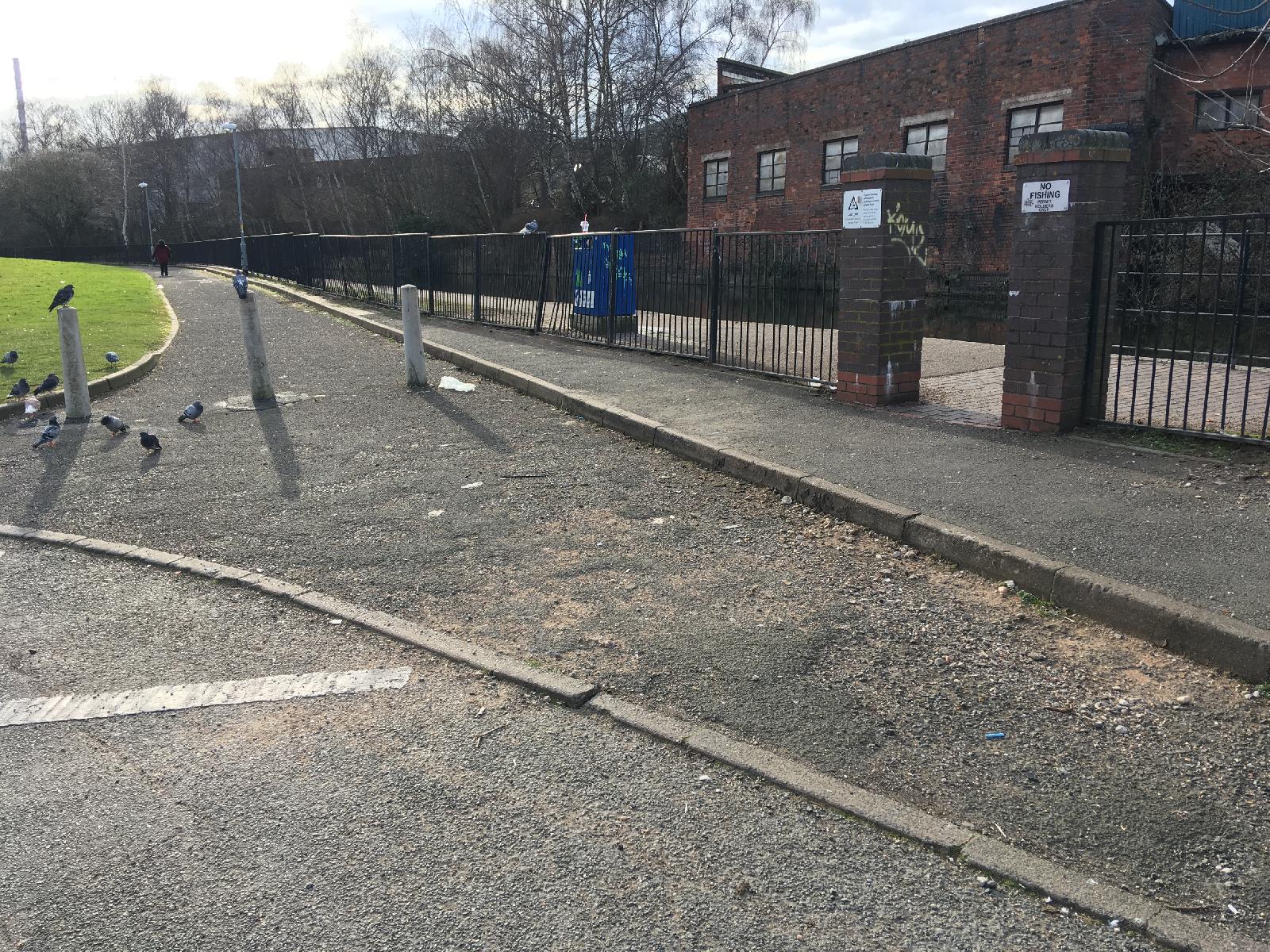
It was a lovely sunny afternoon, and I noticed that the consultation period for the (not quite) city centre to City Hospital pop-up cycleway ends this month. So I went to take a look, and was in general very pleased with what I saw. It is by far and away the longest pop-up lane that I have visited, and it is continuous. In places it is a modification to existing cycle lanes by the addition of wands. I only rode it in one direction, and I could see that it might not work quite so well in the opposite direction, due to switches between bidirectional and unidirectional segments.
I cycled out to it on the A38 cycleway, and returned on the canal tow paths. The latter are so crowded with pedestrians on sunny lockdown Sundays that they are almost unusable for cycling. It didn't help that there were some idiots on e-bikes about who didn't realise that just because you can go fast, that doesn't mean it is safe or wise to do so. That applied to a few motorists too, as ever. On the way back, I had to weave my way around a collision on the brand new Selly Oak Triangle junction, with its excessive number of wide motor traffic lanes. We always seem to find lots space for hostile motor traffic to fill, whilst cycles, as is the case on parts of this pop-up route, are so often given inadequate space even for two cycles to pass, The Dutch do it the other way around, to tame motor traffic and encourage cycling, and we need to do the same.
The title of this blog post comes from a sign I spotted on the side of someone's house whilst cycling the route. In terms of cycling infrastructure, in Birmingham we are just beginning to do it. Lisa Jones from Cycle Birmingham (the Push Bikes social group) has written a blog post of her own experience of the route.
Suggested Improvements
- Motor traffic should be blocked from using Warstone Lane to join Icknield Street, to reduce the number of conflict points on the Warstone Lane junction with Carver Street. Motor traffic would still be able to join Icknield Street, but from the equidistant junction of Carver Street with Icknield Street.
- A ramp or a dropped kerb is needed to allow wheeled access between Clissold Passage and the canal tow path.
- Extending the cycleway into the city centre. The city centre continues to be hostile to cycling, at a time when the trend is to make city centres largely free of motor vehicles.
- The unidirectional lanes would benefit from being wider, to facilitate overtaking.
Carver Street - Warstone Lane Junction

Pop-Up Cycle Lanes on Hingeston Street

Ran Out of Wands?

A Lovely Day for a Bike Ride

Clissold Passage

Dudley Road

Northbrook Street

Bad Wheeling Ramp



